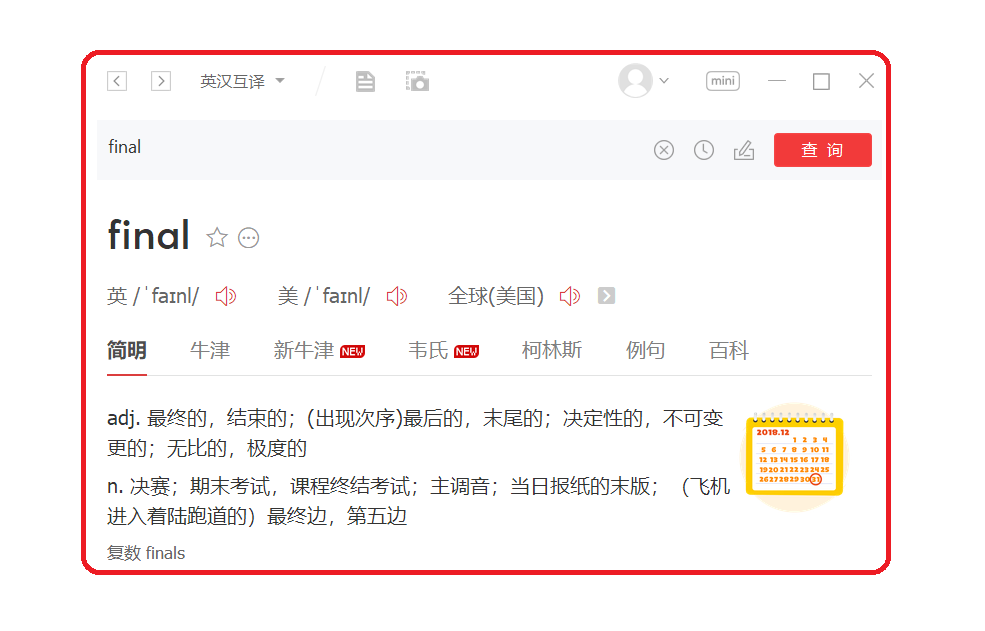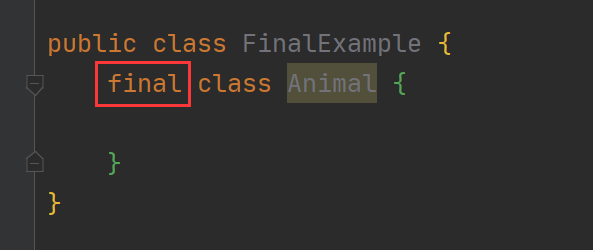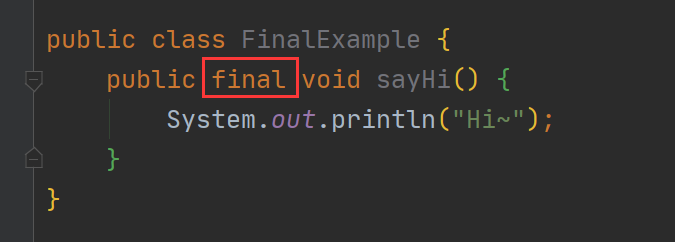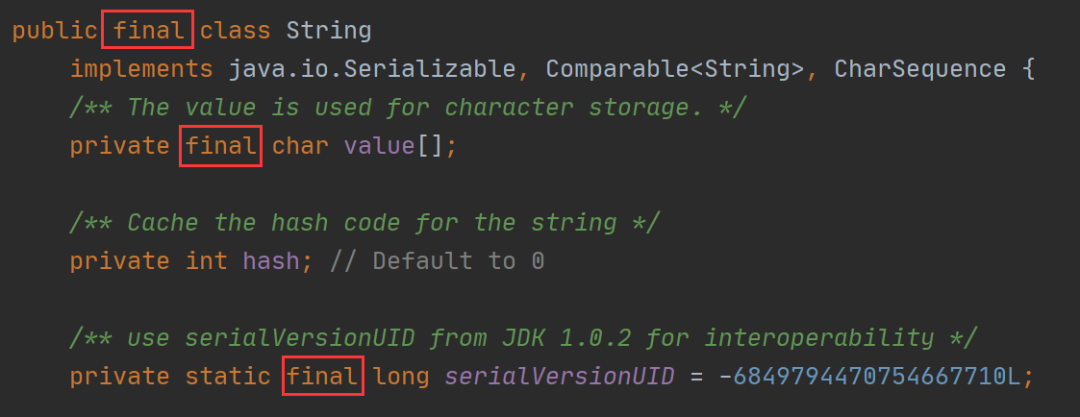
作者 | 王磊
来源 | Java中文社群(ID:javacn666)
转载请联系授权(微信ID:GG_Stone)
重要说明:本篇为博主《面试题精选-基础篇》系列中的一篇,查看系列面试文章请关注我。Gitee 开源地址:https://gitee.com/mydb/interview
final 定义
final 翻译成中文是“最终”的意思,它是 Java 中一个常见关键字,使用 final 修饰的对象不允许修改或替换其原始值或定义。 比如类被 final 修饰之后,就不能被其他类继承了,如下图所示:
比如类被 final 修饰之后,就不能被其他类继承了,如下图所示:
final 的 4 种用法
final 的用法有以下 4 种:
修饰类
修饰方法
修饰变量
修饰参数
1.修饰类
final?class?Animal?{
}
2.修饰方法
public?class?FinalExample?{
????public?final?void?sayHi()?{
????????System.out.println("Hi~");
????}
}
3.修饰变量
public?class?FinalExample?{
????private?static?final?String?MSG?=?"hello";
?//......
}
4.修饰参数
public?class?FinalExample?{
????public?void?sayHi(final?String?name)?{
????????System.out.println("Hi,"?+?name);
????}
}
final 作用
使用 final 修饰类可以防止被其他类继承,如 JDK 代码中 String 类就是被 final 修饰的,从而防止被其他类继承,导致内部逻辑被破坏。
String 类部分源码如下:
总结
final 是 Java 中常见的一个关键字,被它修饰的对象不允许修改、替换其原始值或定义。final 有 4 种用法,可以用来修饰类、方法、变量或参数。
关注公众号「Java中文社群」查看面试系列文章。